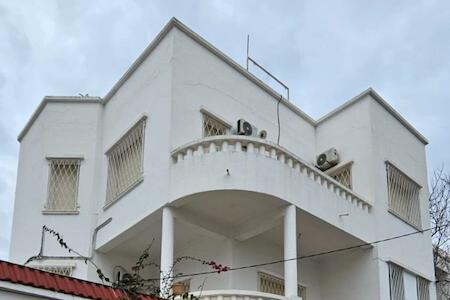Looking for budget stays in Tunis? This section is designed to save you time, money, and unnecessary stress. We've got insider tips to help you find affordable hostels and the cheapest places to stay in Tunis.

Tunis, the vibrant and lively capital of the North African country of Tunisia, is located a short flight or 24-hour ferry ride from Europe, and thus makes an ideal destination for hostel travelers already located on the continent. The main street is Avenue Habib Bourguiba, and runs from Place 7 Novembre with the iconic clock tower and "upside-down" hotel to the historic centre known as the Medina. The city centre feels relatively safe and is quite clean, and Tunisians are a friendly people - sometimes too friendly! In the Medina, the call of the muezzin does battle with the radio's more modern cry of Lady Gaga and the cries of shop keepers and vendors, who invite tourists in to their stalls and try to sell them everything from scarves to perfume to dishwashing liquid.
White staying at your Tunis hostel, consider a day trip to the nearby picturesque town of Sidi Bou Said, home to typical blue-and-white Tunisian houses, or the extensive antique ruins of Carthage. It's also a gateway for tourists wishing to go to the resort towns of Hammamet and Djerba or for more adventurous travelers planning on going to the Sahara.
While in Tunis, expect to use the above-ground metro system to traverse the city. Although initially a little confusing, it's a quick, cheap and safe and will get you to wherever you need to go. Many locals don't appear to buy tickets, but as there are random spot checks by metro employees, tourists should always make sure purchase a valid ticket before traveling. Ticket prices vary by destination, but metro employees are usually willing to help hapless visitors.
As good as the transport system is, the only hostel currently in Tunis is located in the Medina, where the only way of way of getting around is on foot. Although safe, the Medina’s atmospheric twists and turns can be confusing, and hostelers are better off arriving in the day-time when they can see where to go.

